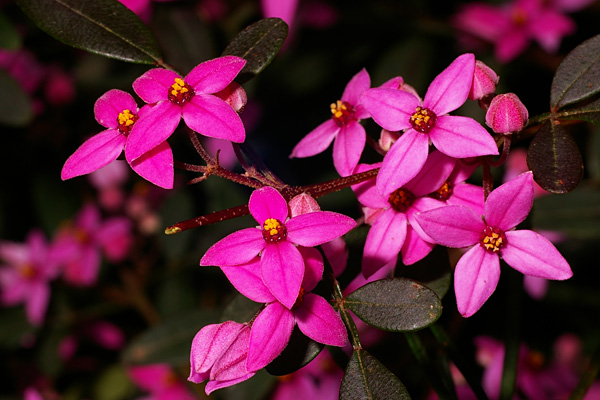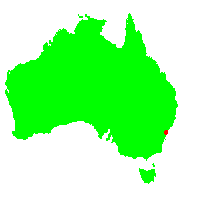General Description:
The genus Boronia is one of the best known of all Australian plants. There are approximately 95 species, all but one of which occur only in Australia. The majority of species are found in south-western Australia.
B.fraseri is a small to medium shrub of about 1-2 metres in height by a similar width. The foliage is pinnate (compound leaves made up of a number of leaflets) with leaves to around 60 mm long – the terminal leaflet being larger than the others. The leaves are glabrous (without hairs) which is one of the features that distinguishes B.fraseri from the closely related B.mollis. The flowers are 4-petalled of a star-like appearance and are pink in colour. They are about 10-15 mm in diameter, well displayed in clusters from the upper leaf axils and occur from mid winter to mid spring.
This is a very attractive species which has been in cultivation for many years. However, it can be difficult to maintain and is much less reliable than B.mollis. The hybrid ‘Telopea Valley Star’ (a B.mollis – B.fraseri cross) is much more reliable as a garden subject. B.fraseri requires a well drained moist soil, preferably in semi shade, and it is tolerant of at least moderate frost.
In common with most members of the Rutaceae, propagation of B.mollis from seed is difficult. In addition, cuttings of B.fraseri seem to be more difficult to strike than some other members of the genus.
* EPBC Act = Environment Protection and Biodiversity Conservation Act 1999;
ROTAP = Rare or Threatened Australian Plants (Briggs and Leigh, 1988)
For further information refer the Australian Plants at Risk page

Boronia fraseri
Photo: Brian Walters
 Australian Native Plants Society (Australia)
Australian Native Plants Society (Australia)













